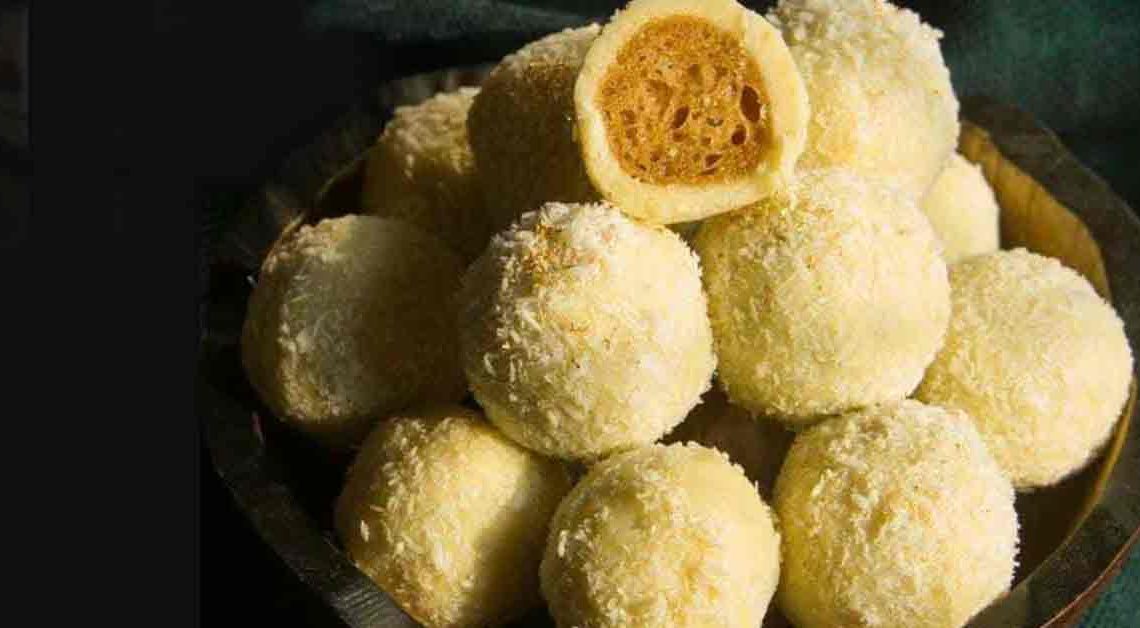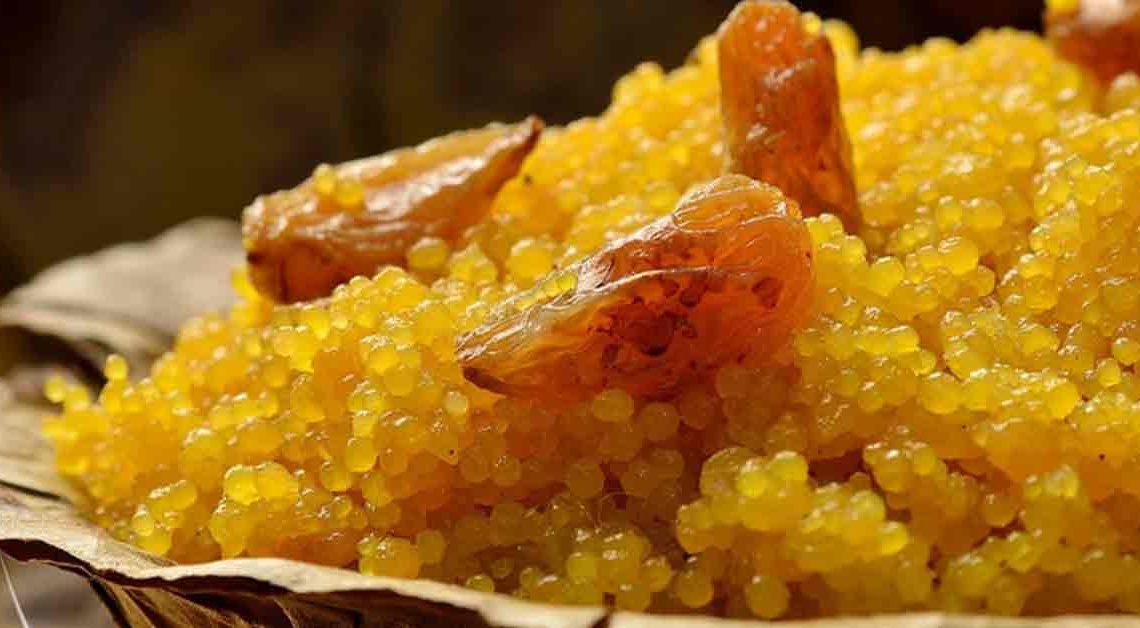Kheer Kadam: A Sweet Symphony of Creamy Bliss and Coconut Crunch

Welcome to our culinary journey on Mithainama, where we explore the delightful world of Indian sweets! Today, we dive into the enchanting realm of Kheer Kadam, a heavenly treat that embodies the essence of traditional Indian sweets with a modern twist.
Imagine a delicate ball of creamy, fragrant kheer, lovingly coated with a layer of luscious khoya and coconut, creating a perfect harmony of flavors and textures. Each bite is a symphony of sweetness, with the richness of khoya blending seamlessly with the subtle sweetness of kheer, while the coconut adds a delightful crunch.
Get ready to indulge your senses and awaken your taste buds as we embark on a journey to savor the essence of India’s rich culinary heritage, one delectable bite at a time.
Origin of Kheer Kadam
It can be traced back to the state of West Bengal in India, particularly to the city of Kolkata. This delightful sweet is believed to have been created by the famous sweet makers of Kolkata, who are renowned for their innovative and delicious sweets.
It is a variation of the traditional Bengali sweet called “Rasgulla.” Rasgulla is made by boiling small balls of chhena in a sugar syrup. It takes this concept to a whole new level by adding a layer of sweetened coconut around the Rasgulla balls.
The name “Kheer Kadam” is derived from two words – “Kheer,” which refers to the creamy rice pudding-like filling inside the sweet, and “Kadam,” which means a step or a stride in Hindi. The name is quite apt, as each bite is indeed like taking a step into a world of sweet, creamy bliss.
It has become a popular sweet not only in West Bengal but also in other parts of India, where it is enjoyed as a special treat during festivals and celebrations.
History of Kheer Kadam
The history is deeply intertwined with the cultural and culinary heritage of Bengal, particularly Kolkata. While exact historical records are scarce, the evolution of this sweet can be traced through its ingredients and the context of Bengali cuisine.
It is essentially a creative variation of the traditional Bengali sweet, Rasgulla. Rasgulla itself has a rich history, believed to have been invented in the 19th century by Nobin Chandra Das, a renowned sweet maker from Kolkata. His creation quickly gained popularity and became a staple in Bengali sweets.
The innovation of adding a layer of sweetened coconut to Rasgulla to create Kheer Kadam is a testament to the creativity and ingenuity of Bengali sweet makers. The addition of coconut not only enhances the texture and flavor but also adds a unique twist to the traditional sweet.
Cultural Significance
It holds a special place in the cultural fabric of Bengal and is deeply intertwined with various aspects of Bengali traditions and celebrations.
Festivals and Celebrations: It is often prepared and served during festivals and special occasions such as Durga Puja, Diwali, and weddings. It is considered a symbol of joy, abundance, and prosperity, making it an essential part of festive feasts and offerings.
Culinary Heritage: As a variation of the traditional Bengali sweet Rasgulla, reflects the culinary heritage of Bengal. It showcases the creativity and ingenuity of Bengali sweet makers who continuously innovate and experiment with flavors and textures.
Rituals and Ceremonies: In Bengali culture, sweets hold significant importance in rituals and ceremonies. With its creamy filling and sweet coconut coating, it is often offered to deities during puja ceremonies and distributed as prasad among devotees.
Where is Kheer Kadam Famous?
Kheer Kadam is primarily famous in the Indian subcontinent, particularly in the state of West Bengal, where it originated. Kolkata, the capital of West Bengal, is renowned for its vibrant food culture and is home to numerous sweet shops that specialize in traditional Bengali sweets like Kheer Kadam.
Apart from West Bengal, it is also popular in other parts of India, where it is enjoyed as a special treat during festivals, weddings, and other celebrations. Its unique combination of creamy kheer and sweetened coconut has made it a favorite among sweet lovers across the country.
In recent years, with the growing popularity of Indian cuisine worldwide, Kheer Kadam has also gained recognition outside India. It can be found in Indian restaurants and sweet shops in various countries, where it is appreciated for its rich flavors and unique texture.
Interesting Facts and Trivia
Here are some interesting facts and trivia related to Kheer Kadam:
- It is a creative variation of the traditional Bengali sweet, Rasgulla. It showcases the innovative spirit of Indian sweet makers, who continuously experiment with flavors and textures to create new delicacies.
- The combination of creamy kheer and sweetened coconut gives Kheer Kadam its unique texture and flavor. The creamy filling contrasts beautifully with the crunchy coconut coating, creating a delightful sensory experience.
- In Bengali culture, sweets hold great importance and are an integral part of social gatherings and festivals. Kheer Kadam, with its rich and indulgent flavors, is often served during celebrations as a symbol of joy and prosperity.
- The preparation is a labor-intensive process that requires skill and patience. Each step, from making the Rasgulla balls to coating them with coconut, is done with meticulous care, reflecting the dedication of Bengali sweet makers.
- While the traditional features of its coconut coating, there are variations of this sweet that use different coatings, such as chocolate or nuts. These variations add a new dimension to the classic recipe, catering to a wider range of tastes.
Did You Know?
Did you know? Consuming Kheer Kadam not only satisfies your sweet cravings but also offers some surprising health benefits!
- It is made with chhena which is a good source of calcium. Calcium is essential for maintaining strong bones and teeth, making a tasty way to boost your calcium intake.
- The combination of carbohydrates from the kheer and fats from the coconut provides a quick energy boost, making a great snack to fuel your day.
- Coconut, one of the key ingredients in Kheer Kadam, is rich in antioxidants like phenolic compounds and flavonoids. These antioxidants help neutralize harmful free radicals in the body, reducing oxidative stress and lowering the risk of chronic diseases.
- The probiotics found in chhena can promote healthy digestion by maintaining a balanced gut microbiota. This can help alleviate digestive issues like bloating and constipation.
- Indulging in a sweet treat can boost serotonin levels in the brain, promoting feelings of happiness and well-being.







